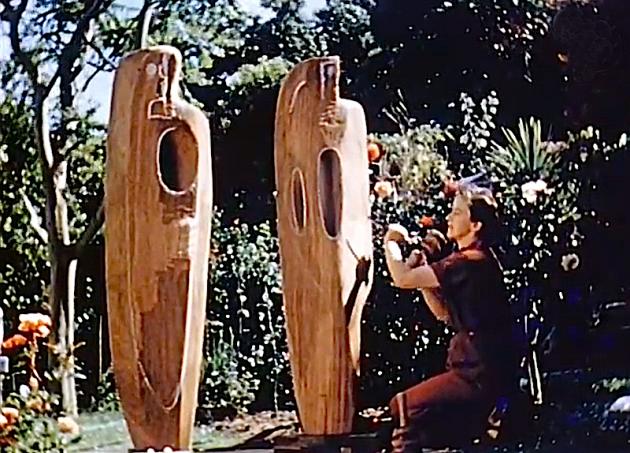Tate Britain has announced the first major Barbara Hepworth exhibition in London for almost fifty years. Barbara Hepworth (1903–75) is most commonly associated with St Ives, Cornwall, where she lived from 1939 until her death in 1975. This major retrospective will emphasise Hepworth’s often overlooked prominence in the international art world, of which she was a leading figure in the 1930s, and one of the most successful artists in the world during the 1950s and 1960s. The exhibition charts Hepworth’s progress from small carvings made as a young woman to the magnificent bronzes that became part of the great sculpture collections of the world. It will present many of her surviving pre-war carvings, and some of her most significant sculptures in wood, stone and bronze. The exhibition will also encompass rarely seen works, including textiles, drawings, collages and photograms.
Barbara Hepworth (1903-75) was a leading figure of the international modern art movement in the 1930s, and one of the most successful sculptors in the world during the 1950s and 1960s. This major retrospective will emphasise Hepworth’s often overlooked prominence in the international art world. It will highlight the different ways in which Hepworth presented her work from the studio to the landscape. Of a middle-class family from the West Riding of Yorkshire, Barbara Hepworth was born in Wakefield on 10 January 1903; her father, Herbert Hepworth, would become County Surveyor and an Alderman. She trained in sculpture at Leeds School of Art (1920-1) and, on a county scholarship, at the Royal College of Art (1921-4), meeting the painters Raymond Coxon and Edna Ginesi and the sculptor Henry Moore. Hepworth was runner-up to John Skeaping for the 1924 Prix de Rome, but travelled to Florence on a West Riding Travel Scholarship. After visiting Rome and Siena with Skeaping, they were married in Florence on 13 May 1925 and moved to Rome, where both began carving stone. In November 1926, they returned to London. Links forged through the British School at Rome with the sculptor Richard Bedford (a curator at the Victoria and Albert Museum), ensured that the collector George Eumorfopoulos visited their studio show in 1927 and bought two Hepworths. The couple moved to 7 The Mall Studios in Hampstead in 1928 (where Hepworth remained until 1939). With Bedford and Moore, they became leading figures in the ‘new movement’ associated with direct carving. Successful joint exhibitions in 1928 (Beaux Arts Gallery, London and Alex. Reid and Lefevre, Glasgow) and 1930 (Tooth’s) consisted of animal and figure sculptures in stone and wood. They joined the London Group and the 7 & 5 Society in 1930-1. A son, Paul, was born in August 1929, but the marriage was deteriorating and in 1931 Hepworth met Ben Nicholson (then married to Winifred Nicholson), who joined her on holiday at Happisburgh, Norfolk. She and Skeaping were amicably divorced in 1933. In 1934 Hepworth gave birth to triplets; she married Nicholson four years later.
Hepworth was especially active within, and on behalf of, the modernist artistic community in St Ives during its period of post-war international prominence. Her experience of the Cornish landscape was acknowledged in her choice of titles. In a wider context, Hepworth also represented a link with pre-war ideals in a climate of social and physical reconstruction; this was exemplified by her two sculptures for the South Bank site of the Festival of Britain (1951). Public commissions and greater demand encouraged her to produce bronze editions.
Barbara Hepworth: ‘Sculpture for the Modern World’ opens on 24 June and runs until 25 October 2015 at Tate Britain.

